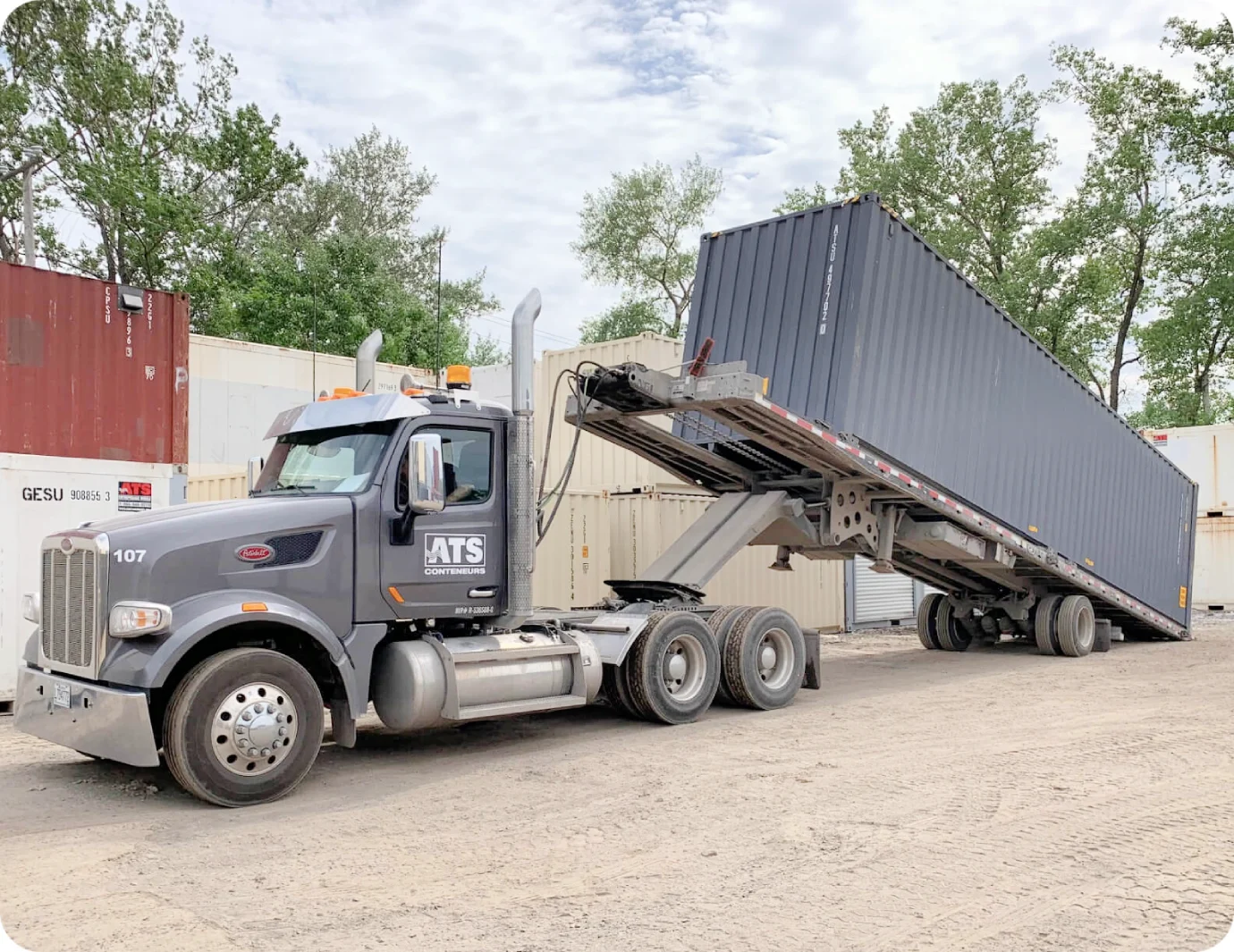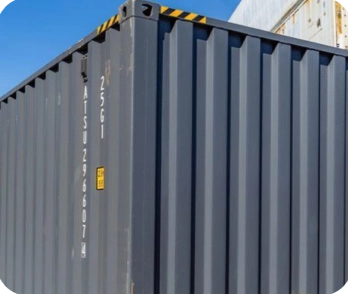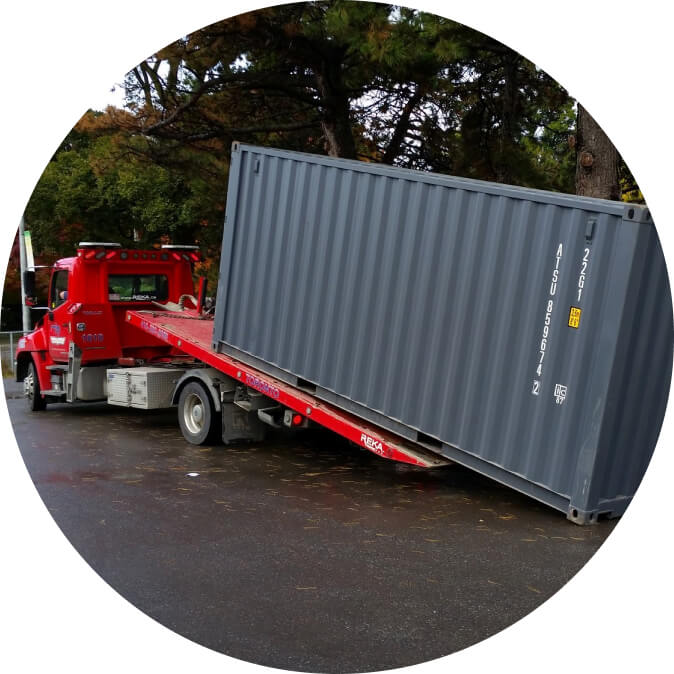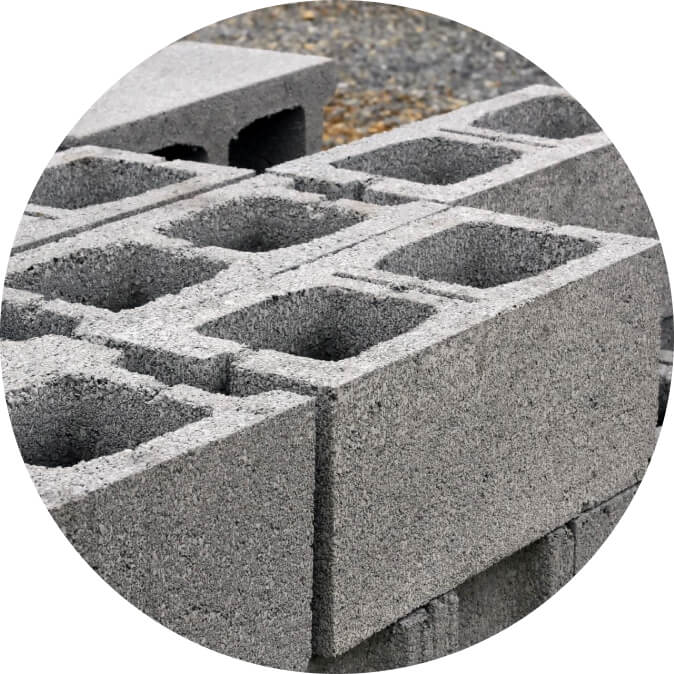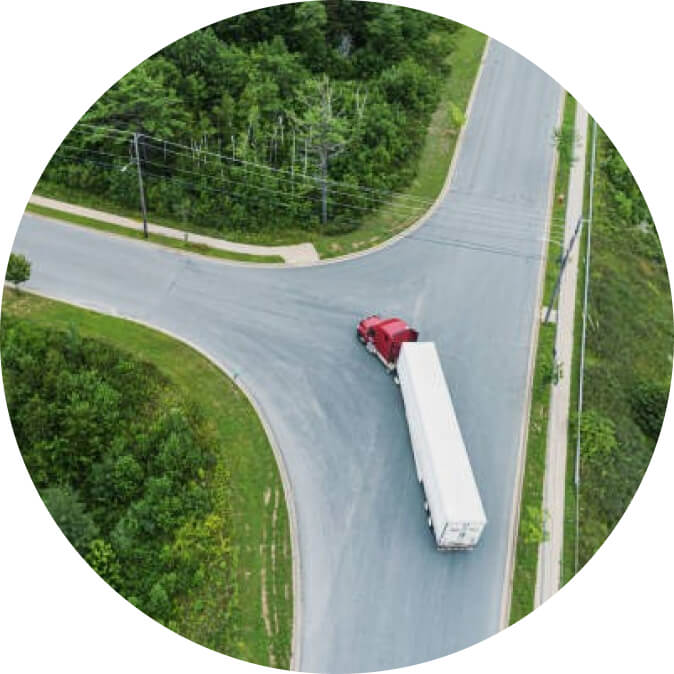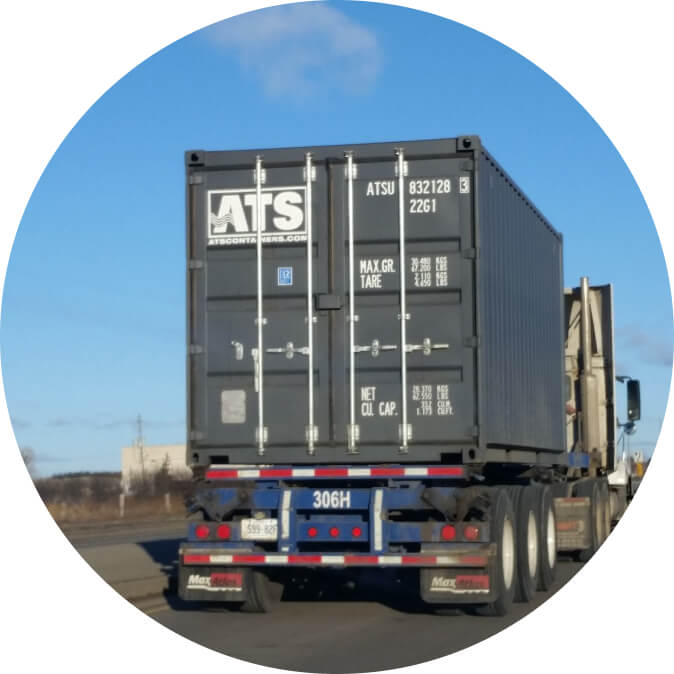Shipping Container Delivery
Shipping containers are delivered by truck. The size of the container and the delivery location will determine what type of truck is used. The majority of shipping containers are delivered on tilt trailers. These trailers back into position and tilt the container down into the desired location without assistance.
The delivery process should take 15-20 minutes.
Ground level delivery
with tilt bed trailer
Tilt bed trailers are the most commonly used method for delivering shipping containers in or around major Canadian cities such as Toronto or Montreal.
- Cost effective when travelling less than ~350 KM
- Trailer bed will tilt to slide container off
- No machinery required to unload
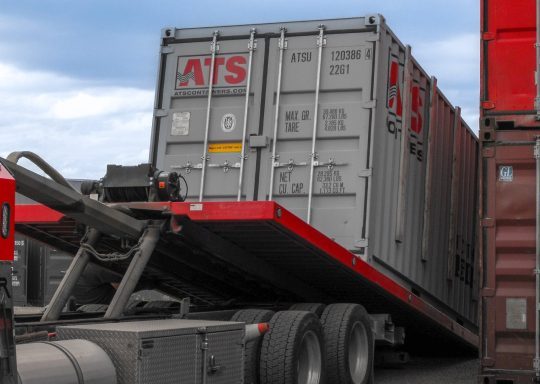
Door Loading Direction
Standard shipping containers have doors on one end. The truck backs into position to tilt the container onto the ground. If the doors are loaded facing the CAB of the truck, they will be the last part of the container to be placed on the ground. If the doors are loaded facing the rear of the truck, they will be placed into position first.
Ground Preparation
As the combined weight of the trailer & container can exceed 50,000lbs, the ground must be firm and dry to prevent the trailer from sinking. The container must also be placed on level ground. The following surfaces are recommended: concrete, pavement, crushed gravel base, railroad ties, etc.
Site Access
The delivery truck must be able to easily enter the property and manoeuver once on site. This can be an issue for 40’ containers that arrive on 53’L trailers. These trailers are unable to make sharp 90-degree turns from two lane highways or narrow entrances. Obstructions on site such as parked cars, heavy traffic, low powerlines, etc. must also be considered.
Straight Line Clearance
Once the trailer has entered the property, the site must have sufficient width (15’W), height (18’H) and straight-line clearance to drop the container unassisted. For the delivery of a 20’ container, the truck will require a minimum of 65 ft of straight-line clearance. For the delivery of a 40’ container, the truck will require a minimum of 110 ft.
How shipping containers are delivered
Each container is delivered at ground level using a hydraulic tilt trailer. This means that the truck deck will extend out and then upwards which will tilt the back of the container down onto the ground. Once in place, the truck will then move forward slowly until the container is lowered completely into its final placement.
We deliver empty containers.
Tilt trailers which are used for container deliveries are not able to lift and transport containers that are loaded. Customers looking to have their loaded container moved or exported, will require machinery such as a crane or heavy duty forklift to lift the container from the ground.

Container delivery with a
flatbed trailer
If your container delivery is outside of a major city or in a remote location, it is usually more cost effective to deliver a container with a flatbed trailer. Flatbed trailers are the preferred method of long-distance transport and more cost effective per km.
- Cost effective when travelling more than ~350 KM
- Requires machinery onsite to unload
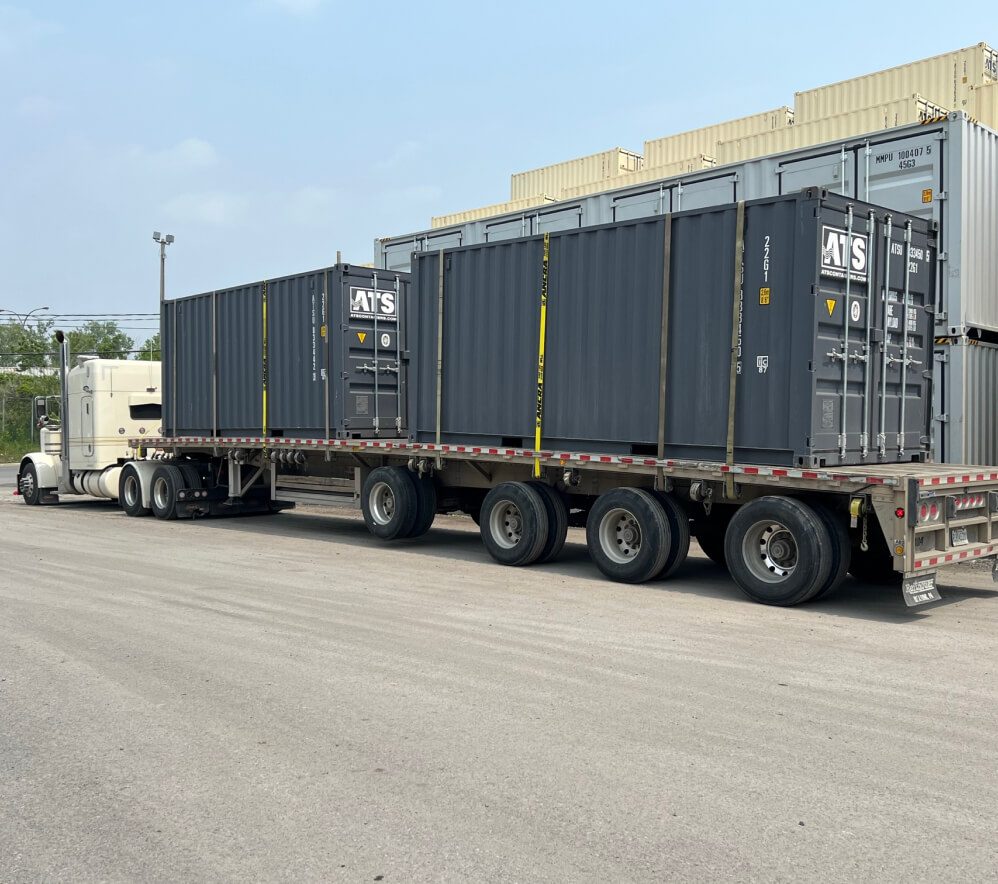

Container delivery with a
step deck trailer
High cube containers require a lower deck, known as a step deck or drop deck, to transport these containers and ensure they respect legal road height limitations.
- Required trailer for transport of high cube containers as the trailer bed is lower to the ground
- Cost effective when travelling more than ~350 KM
- Requires machinery onsite to unload
